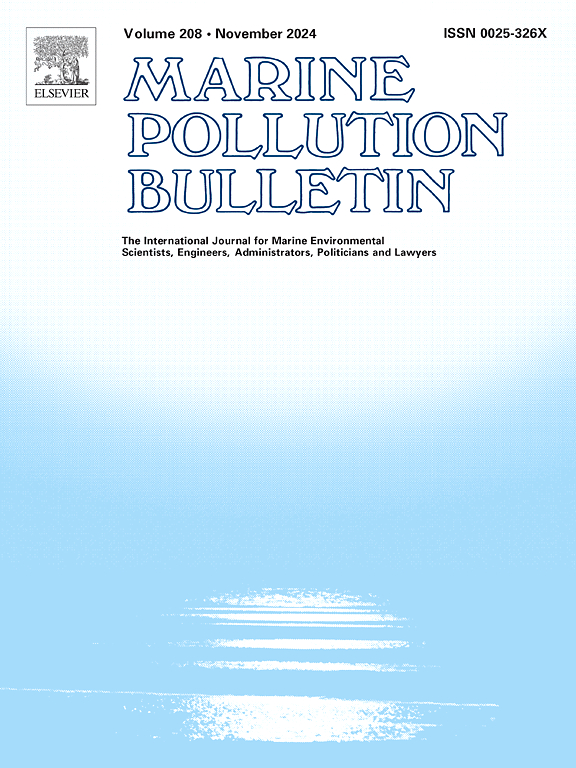Onboard measurement of polyethylene microplastics on a research vessel using Raman micro-spectroscopy: A preliminary study for testing feasibility
IF 5.3
3区 环境科学与生态学
Q1 ENVIRONMENTAL SCIENCES
引用次数: 0
Abstract
Microplastic pollution in marine environments poses significant environmental risks due to its widespread presence. Traditional micro-imaging measurement of microplastics often rely on post-cruise laboratory analyses. In this study, we explored the feasibility of onboard microplastic measurement using Raman spectroscopy, with a focus on polyethylene (PE). A measurement system was developed, and two concentration estimation approaches were proposed. To evaluate recovery and validate the methodology, artificial microplastic samples were prepared, yielding a recovery rate of 94.8 % ± 10.4 %. Environmental samples were then analyzed using the developed system, with results validated against conventional Fourier-transform infrared (FTIR) spectroscopy. The estimated PE concentration was 583 pieces/m3 (95% confidence interval: [2, 1542] pieces/m3) using the direct approach and 1453 pieces/m3 (95% credible interval: [291, 92,837] pieces/m3) using the Bayesian approach. Both estimates were consistent with the 333 pieces/m3 obtained through validation with FTIR, indicating adequate accuracy. However, the wide confidence intervals highlight the need for improved precision. While challenges remain, this study provides a comprehensive experimental procedure and introduces a robust data analysis framework, which could offer a foundational methodology for future onboard microplastic measurement research.

求助全文
约1分钟内获得全文
求助全文
来源期刊

Marine pollution bulletin
环境科学-海洋与淡水生物学
CiteScore
10.20
自引率
15.50%
发文量
1077
审稿时长
68 days
期刊介绍:
Marine Pollution Bulletin is concerned with the rational use of maritime and marine resources in estuaries, the seas and oceans, as well as with documenting marine pollution and introducing new forms of measurement and analysis. A wide range of topics are discussed as news, comment, reviews and research reports, not only on effluent disposal and pollution control, but also on the management, economic aspects and protection of the marine environment in general.
 求助内容:
求助内容: 应助结果提醒方式:
应助结果提醒方式:


